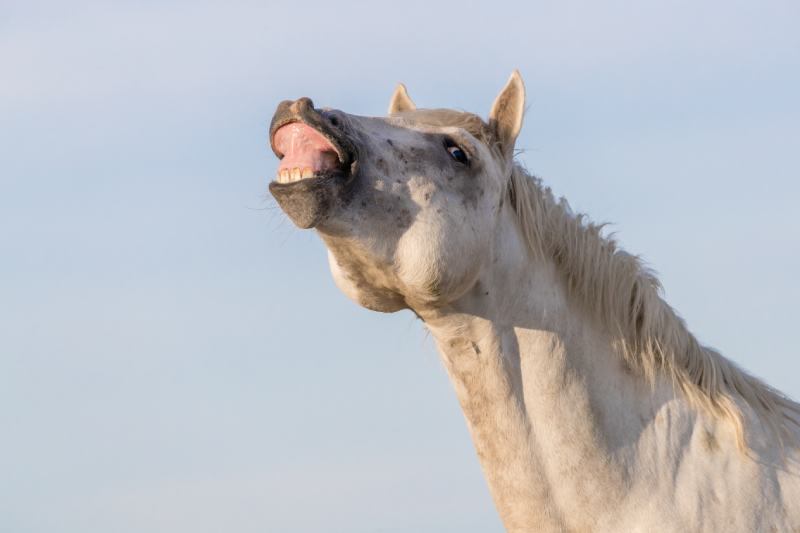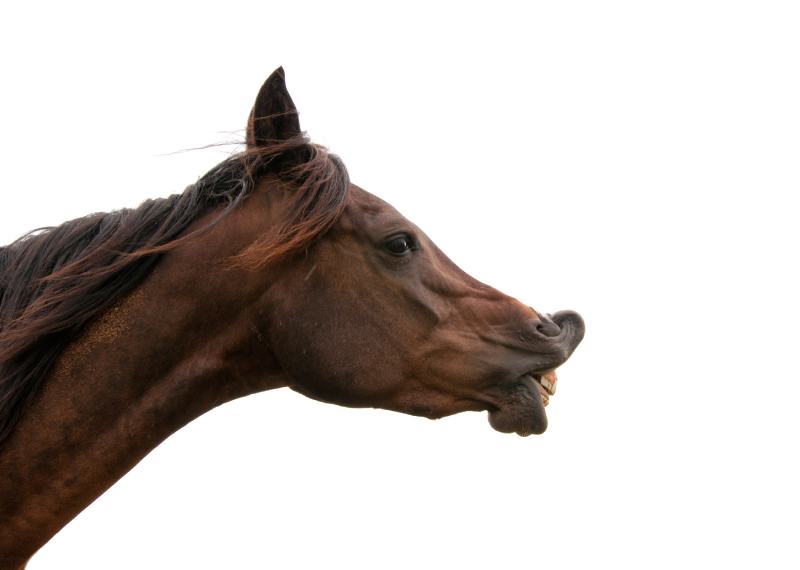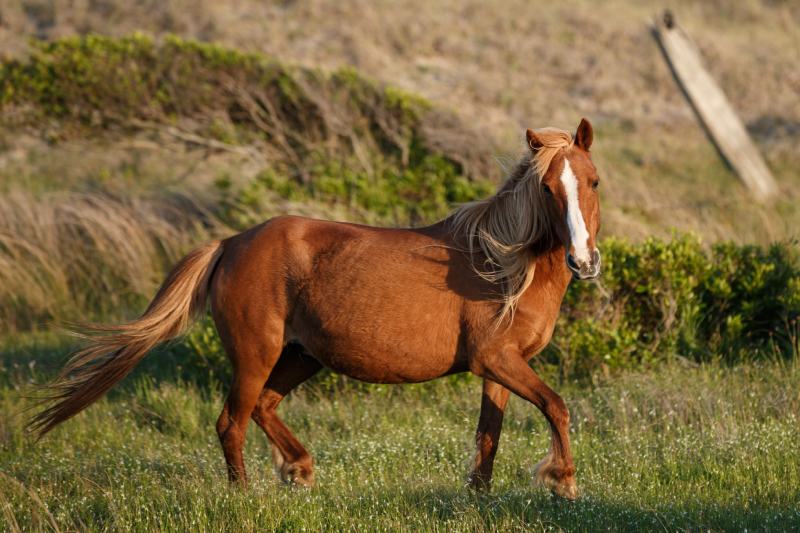Flehmen Response in Horses: Vet Approved Facts & FAQ

Click to Skip Ahead
If you have ever seen your horse (or donkey) look around with their top lip curled up, you might be confused. It is indeed a strange look. When a horse curls their lip upward, it reveals their upper teeth and sometimes their tongue. What on Earth are they doing? Is something wrong with your horse?
This behavior is called the Flehmen Response. It is connected to a specific part of the horse’s brain that interprets signals that are carried in the air. The Flehmen Response is completely natural, and nearly all mature horses do it from time to time. The exact reasons that horses exhibit this behavior have been difficult to pin down, but scientists have some good ideas why they might exhibit it.
Here is everything you need to know about the Flehmen Response in horses, including which horses do it, why they do it, how it works, and whether you should worry about it.
What Is the Flehmen Response?
The Flehmen Response is a behavior exhibited by horses (and other animals) that is recognized by a specific set of noticeable actions. When doing the Flehmen Response, a horse will arch their neck and raise their upper lip, exposing their teeth to the open air. When a horse does this behavior, it is called flehming or flehmening. Flehming is done in order to better absorb special scents in the air that can convey a large amount of information to a horse in a short amount of time.

How Does It Work?
According to veterinarian Dr. Sharon Crowell-Davis, the Flehmen Response is designed to “facilitate the transfer of inhaled scent molecules (pheromones and possibly some other substances) into the vomeronasal organ (VNO).” The vomeronasal organ is a special organ embedded in the roof of the mouth of most mammals. This organ enables mammals to interpret pheromones and other scents from the air that are not picked up by typical olfactory portions of the nose. When a horse raises their upper lip and turns their teeth into the wind, air flows into the mouth and over the vomeronasal organ.
What Are the Different Types of Flehmen Response?
The Flehmen Response is used by different horses for different reasons. All of the reasons for doing the Flehmen Response are not exactly known, and horses could be getting information that people have not considered yet. These are the different types of Flehmen Response and the ways that different horses can use it.
In Males
Male horses, especially adult stallions, do the Flehmen Response the most. They will exhibit this behavior more frequently when they are around female horses. Stallions will present the response when detecting mare urine, which is a strong trigger.
The Flehmen Response frequency increases when they detect a mare in estrus. They also present this behavior in the presence of birthing fluids on a newborn foal.

In Females
Females most often do the Flehmen Response right after giving birth. It is theorized that the mares are doing the response to smell for their young. Newborn foals have strong and specific odors that are tied to birth and amniotic fluid. When a mare comes in contact with these smells, they often exhibit the Flehmen Response.
Environmental
Mature horses of all kinds can show the Flehmen Response due to environmental factors. New food, food supplements, rotten food, medications, and even water can cause a horse to do the Flehmen Response. They do this in order to sniff out particularities in their food to look for inedible bits.
Horses have also been shown to do the Flehmen Response after hard rains or when they are looking for a place to roll or lie down. This might help horses smell other horses or animals that might be in the area before they put themselves in a potentially compromising position.
Pain
Sometimes a horse will appear to do the Flehmen Response in reaction to pain. They extend their noses and curl their lips when suffering from colic, for example. It is unclear if this is an involuntary pain response or a purposeful way to try to sniff out help. If your horse appears distressed and is doing the Flehmen Response, especially if they don’t normally do it, they could be experiencing pain.
Where Is It Used?
The Flehmen Response is used by all mature horses in various situations. The response is usually triggered by the presence of other horses or environmental factors. Stallions do the response the most, followed by mares that have just given birth. Geldings (castrated male horses) exhibit the Flehmen Response the least out of all mature horses.

Frequently Asked Questions
What Triggers the Flehmen Response?
Specific scents will trigger the Flehmen Response, but the exact scents are not precisely known. It is also not known which scents will cause individual horses to respond. Some horses will do the Flehmen Response in one situation, and another horse will not. The response is typically triggered by another horse’s bodily fluids containing pheromones and hormones or environmental strands in the air.
It is not well understood if the Flehmen Response is involuntary (where a certain scent activates the response), if horses do it on purpose to seek out certain scents, or if it is a combination of both. Studying the Flehmen Response and the vomeronasal organ has proven to be tricky.
What Is the Vomeronasal Organ?
The VNO, once called Jacobson’s organ, is a special organ often found in the roof of the mouth of most mammals. It’s usually linked to the mouth or nose via nasal passages. When it senses certain smells, it sends messages directly to the brain. Pheromones from other horses can cause different reactions in the body or changes in behavior. For example, stallions can get ready to breed, and mothers can locate and nurture their foals.
Is the Flehmen Response Connected to Colic?
Not necessarily. Some people think that the Flehmen Response is connected to colic, but that is a misinterpretation of the behavior. Some horses do curl their lips when they are in pain, and in those cases, it can absolutely be connected to colic. However, since the horse is not detecting chemical messages but rather responding to pain, there is no link between the Flehmen Response and colic per so.
If you see your horse doing the Flehmen Response, it is important to study their environment and other behaviors to rule out whether the horse is in pain or suffering from colic.
Conclusion
The Flehmen Response is a natural part of a horse’s behavior. It is used to pick up on and interpret scents in the air. It can be used to find a mate, connect with a foal, look for nearby horses, and interpret environmental conditions. All mature adult horses will do this behavior from time to time, and some horses will do it far more than others. Unless your horse is sick, in pain, or colicky, it is not a concerning behavior to see.
Featured Image Credit: cctm, Shutterstock
The post Flehmen Response in Horses: Vet Approved Facts & FAQ appeared first on Pet Keen.

